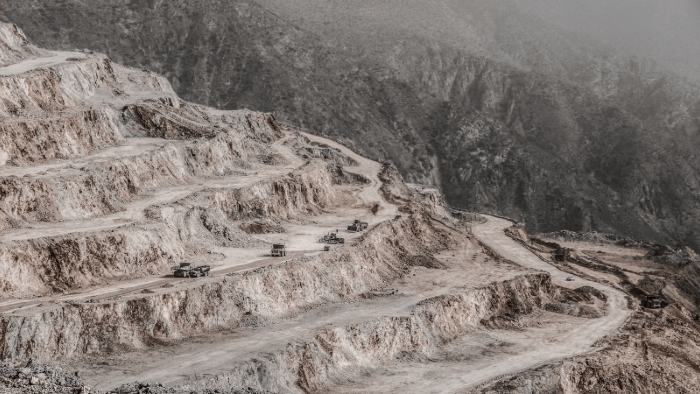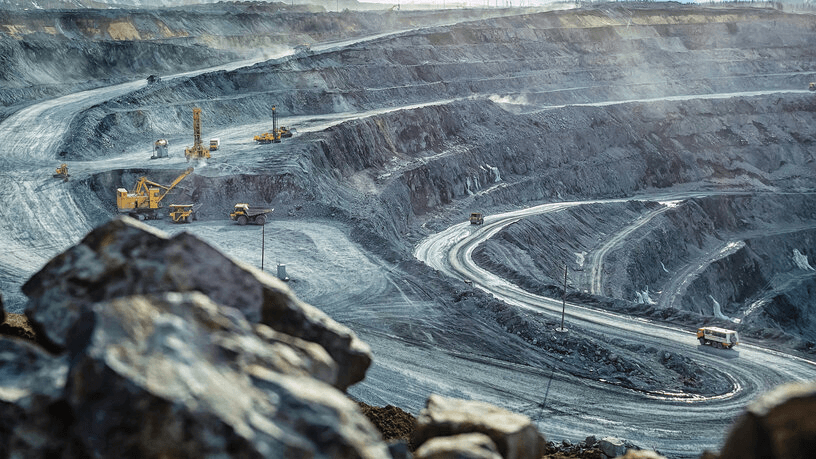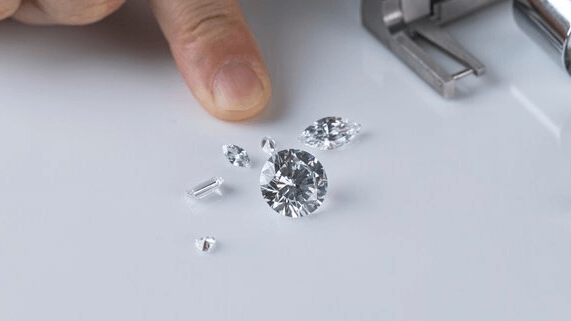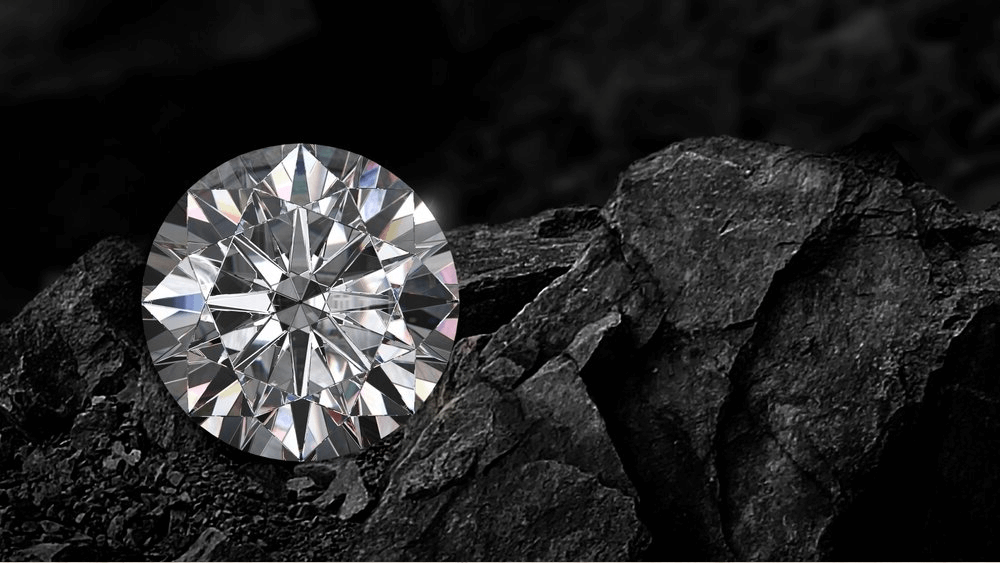From Earth’s Mines to Your Ring: A Diamond in the Rough Story

By Gary A.

Edited by Olivia H.
Published May 26, 2024
Edited on Dec 18, 2024
When exploring the origins of your diamond, it’s fascinating to consider how diamond mines around the world contribute to the gems we cherish, each with its unique legacy and impact.

Navigate this guide:
- 7 Quick Tips for Selecting a Diamond Engagement Ring
- Introduction to diamond mines
- Global Diamond Production
- Russia’s Dominance
- Botswana’s Rich Mines
- Canada’s Rising Role
- Historical and Modern Mines
- Legacy of Golconda and Mirny
- Ekati and Diavik: Modern Marvels
- Technological Advancements in Mining
- Our Expert Take: Future of Diamond Mining
- 10 Frequently Asked Questions About Diamond Mines
Before we dive deeper into the specifics, here are some practical tips to help guide your decision-making process:
7 Quick Tips for Selecting a Diamond Engagement Ring
When selecting a diamond engagement ring, understanding the origins and characteristics of the diamond is crucial. Here are some vital tips to consider, especially when examining diamonds from specific mines.
- Tip 1. Understanding the Mine of Origin
Research the Mine’s Reputation: Different diamond mines are known for various qualities and types of diamonds. For instance, some mines are famous for producing exceptionally clear diamonds, while others are known for colored diamonds. Research the mine’s reputation to understand what to expect in terms of diamond quality. - Tip 2. Consider the Mining Practices
Ethical Sourcing and Environmental Impact: Diamonds from mines that practice ethical sourcing and have minimal environmental impact are increasingly preferred. Ensure the diamond you choose comes from a mine that adheres to ethical mining practices and has a responsible approach towards the environment. - Tip 3. Recognize Mine-Specific Characteristics
Identify Mine-Specific Diamond Traits: Each diamond mine produces stones with unique characteristics. For example, diamonds from the Golconda region in India are known for their high clarity and slightly warmer color. Familiarize yourself with these traits to make an informed choice. - Tip 4. Analyze Diamond Quality Parameters
Quality Based on Mine Output: Understand that the quality parameters of diamonds (such as cut, color, clarity, and carat weight) can vary based on the mine of origin. Mines have different average qualities for these parameters, which can affect the overall value and appearance of the diamond. - Tip 5. Traceability and Origin Certification
Check for Certification of Origin: Opt for diamonds that come with a certification of origin. This certification ensures that you know exactly which mine the diamond comes from, providing assurance about its quality and ethical sourcing. - Tip 6. Be Aware of Market Value Differences
Understand Pricing Variances: Diamonds from certain mines may carry a premium due to their historical significance, rarity, or specific qualities. Be aware that the mine of origin can significantly influence the market value of a diamond. - Tip 7. Consider Unique Mine-Originated Diamonds
Explore Rare Finds from Specific Mines: Some mines are known for producing exceptionally rare or unique diamonds, such as fancy colored diamonds or stones with unusual inclusions that add character. If uniqueness is a priority, exploring these options can lead to a truly special engagement ring.
Now that you’ve got these practical tips, use Jeweler AI below to find the perfect engagement ring that suits your style and budget:
Introduction to diamond mines
When we stare at a diamond ring on our finger, it’s hard to imagine just how old it really is. Diamonds start off as tiny carbon atoms deep underground. Unseeable. Unknowable. Until the immense pressure and heat over millions of years transforms them into stunning gemstones.
The process of getting that gemstone onto a beautiful ring is lengthy, and we’ve talked a lot about it from a jeweller’s perspective, but what about the miner? What about that first moment the earth is uncovered and gemstones glint in the light for the very first time? We wanted to take some time to talk about that moment, complete with a full guide on how the mining process works and how it has evolved over the years.
Global Diamond Production
When we talk about global diamond production, we’re talking about the extraction of diamonds from various locations around the world. This production is carried out through both large-scale industrial mining operations and smaller-scale artisanal mining.
When it comes to large-scale operations, companies begin by conducting geological surveys – including studying rock formations, taking soil samples, and utilising satellite imagery – to identify areas with potential diamond deposits, looking specifically for volcanic formations called ‘kimberlite’ and ‘lamproite pipes’. Once a site has been found, infrastructure development can begin. This involves two different kinds of mining operations – open-pit mining and underground mining.
For open-pit mining, explosives are used to break up the rock and layers of soil are removed. Excavators and haul trucks then transport the ore to processing facilities, and ‘steps’ are cut into the sides of the pit to provide access. For underground mining, tunnels are constructed to reach deeper underground, using techniques such as ‘block caving’, which involves undermining a block of ore before it collapses and is collected.
For both operations, the ore is then transported to a processing plant where it is crushed into smaller pieces and searched for diamonds. Any recovered diamonds are then sorted based on their size, their shape, and their quality, with gem-quality diamonds separated from industrial diamonds. All gem-quality diamonds are then graded based on the 4C’s (carat, cut, color, and clarity) and their market value is determined.
Russia’s Dominance
We touched briefly on ‘various locations’ when describing where diamonds are found, but actually, there are only a handful of common diamond locations around the world. These include Russia, Botswana, and Canada.
When it comes to Russia, this country plays a dominant role in the global mining industry, being one of the top producers of diamonds by volume. ALSORA, the Russian mining company, is also one of the biggest in the world, operating multiple mines across Russia which produce millions of carats annually. With such a large production volume, Russia can exert substantial influence on global diamond prices and market trends, essentially asserting its dominance over the entire industry.
Botswana’s Rich Mines
Botswana also plays a significant role in the mining industry, with its rich diamond mines being a cornerstone of the country’s economy since their initial discovery in the late 1960s. Some of the most famous mines there include Jwaneng, which is one of the richest diamond mines in terms of value and volume. Over time it has even developed the nickname the ‘Prince of Mines’ due to its yield of high-quality, beautiful gem diamonds that are sold to jewellers at an exceptionally high price. The Orapa mine is another major diamond-producing operation, having been in operation since the early 1970s.
Canada’s Rising Role
Canada is the last of the ‘big three’ diamond locations, but its arrival into the fray was pretty late on, with the first major diamond deposits only founded in the early 1990s. This was when the mine known as ‘Ekati’ was discovered, with subsequent kimberlite exploration also unveiling the Diavik mine, which began production in 2003. In terms of job creation and revenue, these discoveries created thousands of jobs in the Northwest Territories, with Canada also becoming one of the most ethical and transparent countries when it came to diamond sourcing and supply chain management.
Historical and Modern Mines
If you were to visit either Ekati or Diavik, you’d be looking at a quintessentially modern diamond mine, characterised by advanced technology, extensive infrastructure and, of course, stringent safety standards. But travel back a few hundred years, and you’d be looking at something quite different.
Historical diamond miners had limited technology and equipment, which meant mining processes were largely labour-intensive, with basic extraction tools including picks, shovels, and sieves. In the 21st century, these tools have been replaced by automated machinery, remote sensing, 3D modelling, and real-time monitoring systems.
Modern mines also operate under strict environmental regulations, aiming to minimise the negative ecological impact and promote sustainable practices throughout the mining process – sustainable practices that were completely non-existent just one hundred years ago!
Legacy of Golconda and Mirny
Still, there’s something quite striking about older mines like Golconda or Mirny. Located in India, Golconda has been a well-known diamond location for thousands of years, with the most iconic mine believed to be Kollur Mine, also known as the ‘Great Mine of Golconda’. Its legacy includes the incredible Koh-i-Noor, which means ‘Mountain of Light’ in Persian – a diamond with an illustrious history of ownership by various rulers and empires, including Indian, Persian and British monarchs. Mirny, on the other hand, was established in the 1950s and is renowned for its huge open-pit operation – a development which became one of the largest man-made excavations in the world.

Ekati and Diavik: Modern Marvels
That’s not to say modern mines are any less jaw-dropping. However, Ekati itself is located in the harsh Arctic terrain, with state-of-the-art equipment like autonomous haul trucks and large-scale excavators making it stand out as a technological marvel. Diavik, too, is located in a challenging sub-Arctic environment. One of the most remarkable things about this mine, though, is its innovative underwater mining operations. Using dikes and submersible pumps, diamonds beneath Lac de Gras – a 300 km glacial lake northeast of Yellowknife – are extracted in a lengthy process that involves creating underwater containment areas to facilitate their recovery. A feat that has since become a landmark achievement in the modern mining industry.
Technological Advancements in Mining
Keeping with Diavik for a second, one of the most amazing things about this mining location is that, despite the obvious challenges of extracting diamonds underwater, the latest technological advancements still make it possible to stick to a sustainable code. Remote monitoring systems, for instance, are used to undergo biological surveys and track whether there are any signs of environmental stress.
Geomembrane liners are used to reinforce dikes and prevent seepage of water, settling tanks and modern filtration systems are used to purify the water extracted and discharge it back into the environment, effectively recycling the water used in the mining process. Elsewhere in the world, the mining company Debswana has implemented even more advanced technologies, including the use of X-ray sorting and dense media separation to improve the recovery rate and quality of diamonds while majorly reducing energy consumption.
The diamond mine Gahcho Kue – a joint venture between De Beers and Mountain Province Diamonds – is also utilising an advanced environmental monitoring system, using it to track air quality, water quality, and the health of wildlife in the surrounding area. Around the world, the process of mining diamonds and keeping to regulatory requirements is only growing more efficient, to the point where modern mines – compared to historical mines – are almost unrecognisable in 2024.
Our Expert Take: Future of Diamond Mining
In terms of the future, things are only going to get more impressive. Continued advancements in mining technologies such as automation and remote sensing are going to continue improving operational efficiency and safety, with robotics also bound to reduce the need for human labour in dangerous environments – while also enhancing the precision and control needed throughout the mining process.
Sustainability is also going to be top of the priorities list, with new techniques to reduce carbon emissions and minimise the overall footprint of various mining activities. The rise in AI tech could also prove beneficial. Using AI-powered algorithms and machine learning techniques, geologists and exploration teams can pinpoint diamond deposits more easily, while the layout of mining operations and haulage routes can also be easily calculated. AI-enabled mining systems might also control and coordinate mining equipment without any human intervention, optimising the whole process to ensure it’s efficient, safe, and environmentally sustainable.
As technology continues to evolve, the diamond mining industry will evolve along with it, becoming better and more sustainable in a way we can’t even yet imagine. And to think it all started with someone digging a big hole and finding something shiny. It’s amazing how far we’ve come!
10 Frequently Asked Questions About Diamond Mines
- Q: What Are the World’s Most Famous Diamond Mines?
- A: The most famous diamond mines include the Argyle in Australia, known for its pink diamonds; the Cullinan in South Africa, where the largest rough diamond was found; and the Orapa in Botswana, one of the world’s largest diamond mines by area.
- Q: Can Diamonds from Different Mines Vary in Quality?
- A: Yes, diamonds from different mines can vary significantly in quality. Factors such as color, clarity, carat, and cut can differ based on the geological characteristics of each mine.
- Q: How Can I Tell if a Diamond Is Ethically Sourced?
- A: Look for diamonds with certification from organizations like the Kimberley Process or Responsible Jewellery Council. These certifications ensure diamonds are ethically sourced and conflict-free.
- Q: Are Diamonds from Some Mines More Expensive?
- A: Yes, diamonds from certain mines, especially those known for high-quality or rare colored diamonds, can be more expensive. The mine’s reputation and historical significance can also affect prices.
- Q: What Is the Biggest Diamond Mine in the World?
- A: The Orapa mine in Botswana is one of the world’s largest diamond mines in terms of area. However, the Aikhal mine in Russia is the largest by production volume.
- Q: Do All Diamond Mines Produce Gem-Quality Diamonds?
- A: Not all diamond mines produce gem-quality diamonds. Some mines primarily yield industrial-grade diamonds, which are used in various industrial applications.
- Q: How Are Diamonds Mined?
- A: Diamonds are mined using several methods, including open-pit mining, underground mining, and alluvial mining, where diamonds are extracted from riverbeds or ocean floors.
- Q: Are There Any Public Diamond Mines?
- A: Yes, the Crater of Diamonds State Park in Arkansas, USA, is a famous public diamond mine where visitors can search for diamonds and keep any they find.
- Q: What Is the Environmental Impact of Diamond Mining?
- A: Diamond mining can have significant environmental impacts, including soil erosion, deforestation, and ecosystem disruption. However, many mines now implement practices to reduce environmental damage.
- Q: Can I Visit a Diamond Mine?
- A: Some diamond mines offer guided tours, allowing visitors to learn about the mining process and sometimes view the mining operations. However, access varies by mine and location.
Discover your perfect diamond engagement ring with Jeweler AI. Optimize your search from mines to marketplace today!
FOLLOW-UP GUIDE SERIES









